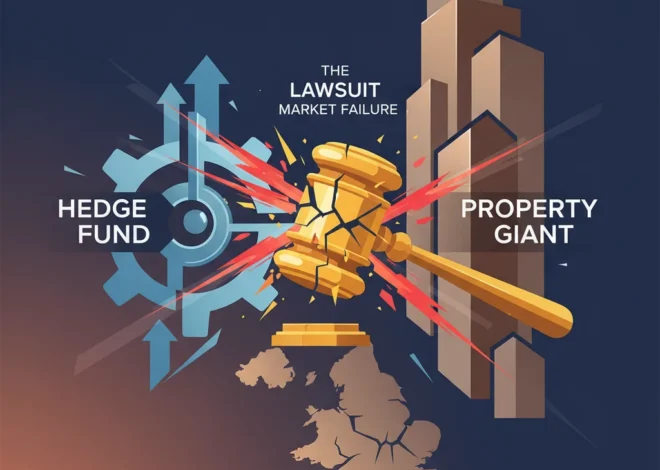
From Prison Chant to Profit: A Financial Autopsy of the Rock Anthem ‘Black Betty’
That thunderous opening riff, the crack of a snare drum, and the raw, unbridled cry of “Whoa, Black Betty, bam-ba-lam!” It’s a sound seared into the DNA of rock and roll, a stadium-shaking anthem that feels as primal as it is electrifying. But the 1977 smash hit by Ram Jam is not the product of a freewheeling rock band’s jam session. Its origins are far deeper, murkier, and more fascinating—stretching back to the call-and-response chants of American prison farms in the early 20th century.
The journey of “Black Betty” from a folk artifact to a multi-million-dollar piece of intellectual property is more than just a music history lesson. It’s a masterclass in asset transformation, market disruption, and the very nature of value creation. For investors, entrepreneurs, and financial leaders, the story of this song provides a powerful, tangible analogy for understanding how raw potential is identified, refined, and monetized in the modern economy. It’s a case study in turning the obscure into the iconic, a process that lies at the heart of successful investing and strategic finance.
The Raw Asset: Unearthing Value in Cultural Bedrock
Before it was a rock anthem, “Black Betty” was a work song, an a cappella chant used by predominantly African American inmates on prison farms to keep time while performing grueling manual labor. Its earliest documented roots trace back to the 1930s. In 1939, the legendary musicologist Alan Lomax recorded folk singer Huddie Ledbetter, better known as Lead Belly, performing a version for the Library of Congress. This recording was the first critical step in transforming an ephemeral piece of oral tradition into a tangible asset. It codified the melody and lyrics, creating a foundational piece of intellectual property, even if its commercial value was negligible at the time.
In the world of finance, this is akin to discovering a raw, un-assayed commodity. Think of it as an unexplored plot of land rich with mineral deposits or an obscure academic paper outlining a revolutionary algorithm. The intrinsic value is present, but it’s latent, inaccessible to the mass market, and requires vision and processing to unlock. Lead Belly’s version was the geological survey—it proved the asset existed and documented its core properties. However, like many foundational innovations, its creators rarely capture the lion’s share of the eventual financial upside. According to the Financial Times, the track was first recorded by Lead Belly in 1939, but it wouldn’t become a commercial juggernaut for nearly four decades.
This early stage represents a critical lesson for investors and talent scouts in any industry: the most disruptive ideas often don’t emerge from corporate R&D labs. They are found in the wild, in subcultures, academic circles, or, in this case, the most marginalized corners of society. The initial challenge isn’t creation, but curation and recognition. The Mighty Real ROI: How a Disco Anthem Teaches a Masterclass in Financial Technology and Strategic Pivots
The Value-Add Process: Engineering a Market-Dominating Product
For decades, “Black Betty” remained a piece of folk history, a niche interest for music purists. Its transformation began in the 1970s with Bill Bartlett, a guitarist for the band Starstruck (which would later morph into Ram Jam). Bartlett rearranged the song, infusing Lead Belly’s raw vocal melody with the sonic architecture of 1970s heavy rock: a driving guitar riff, a powerful drum beat, and a polished production. This wasn’t just a cover; it was a complete product overhaul.
This process is the industrial and financial “value-add” in its purest form. Bartlett and his producers acted as entrepreneurs, taking a raw asset and applying modern “technology”—in this case, the production techniques and musical vocabulary of hard rock—to make it palatable and exciting for a new, much larger target demographic. They transformed a historical artifact into a commercial product, much like a fintech company takes the complex, arcane principles of banking and repackages them into a slick, user-friendly mobile app. The core function may be the same, but the delivery mechanism, user experience, and market reach are exponentially greater.
When Ram Jam’s version was released in 1977, the result was explosive. The song became a one-off international hit, reaching the top 10 in the UK and Australia and number 18 in the US (source). This was the asset’s “IPO moment.” The market had spoken, validating the transformation with massive sales and radio play. The obscure folk chant was now a blue-chip stock in the portfolio of rock and roll.
The evolution of “Black Betty” from its origins to a commercial hit provides a clear framework for understanding asset transformation. Here is a breakdown of its journey through a financial lens:
| Stage of Development | Asset Characteristics | Market Environment | Financial & Economic Analogy |
|---|---|---|---|
| Work Chant (Pre-1930s) | Intangible cultural heritage, oral tradition, functional (pacing labor). | Niche, isolated, non-commercial. | An un-patented idea or raw, unprocessed natural resource. High potential, zero market value. |
| Lead Belly’s Recording (1939) | Codified melody and lyrics, tangible artifact (a recording), culturally significant. | Academic, archival, folk music enthusiasts. | A seed-stage startup with a proof-of-concept. The IP is secured, but it has no commercial product or revenue stream. |
| Ram Jam’s Hit (1977) | Polished, high-production value, genre-specific arrangement (hard rock). | Global mass market, commercial radio, record stores. | A successful IPO. The asset is packaged for public consumption, achieving massive market penetration and profitability. |
| Modern Legacy (Post-1977) | Enduring IP, licensed for films, ads, and covered by other artists. | Mature, diversified, long-tail revenue streams. | A blue-chip asset generating consistent dividends (royalties) and maintaining brand value over decades. |
Risk, Reputation, and the Long Tail of an Asset
No high-return investment comes without risk, and “Black Betty” was no exception. Shortly after its release, civil rights groups, including the NAACP, called for a boycott of the song, citing lyrics they argued were derogatory towards Black women (source). This controversy represents a classic form of reputational risk, where shifting social and political sentiments can directly impact an asset’s market performance and public perception. For any company or investor, this is a vital lesson in due diligence and understanding the cultural context of an asset, whether it’s a brand name, a piece of software, or a rock song.
Despite the controversy, the song’s commercial power endured. It settled into the pantheon of classic rock, becoming a permanent fixture on the airwaves and at sporting events. This demonstrates the “long tail” value of a truly successful asset. Decades after its peak on the stock market of pop culture, it continues to generate royalties from radio play, streaming, and licensing for movies and commercials. This is the annuity phase of an investment, where the initial capital outlay and development effort yield returns for years, or even decades, to come. The New Landlord on the Block: Unpacking Lloyds Bank's £2 Billion Real Estate Empire
The “Black Betty” Enigma: How Ambiguity Drives Value
Perhaps the most intriguing aspect of the song is that no one can definitively say who, or what, “Black Betty” is. Theories abound: some historical sources suggest it was a nickname for a flintlock musket, recognizable by its black-painted stock. Others claim it was slang for a whip used by prison guards, while another popular theory posits it was a term for a bottle of whiskey.
From a strategic perspective, this ambiguity is not a flaw; it is the asset’s single greatest feature. Because “Black Betty” has no fixed definition, it can be endlessly reinterpreted. For the prison chanters, it may have been an object of their oppression. For Lead Belly, a piece of folk tradition. For Ram Jam and their audience, a symbol of rebellious, rock-and-roll energy. This semantic flexibility is what allowed the asset to be so successfully “re-platformed” from a work chant to a rock anthem.
This is a profound lesson for innovation and marketing in the financial and technology sectors. The most powerful and enduring platforms—from blockchain to early artificial intelligence—are often those with a degree of ambiguity in their application. Bitcoin was initially positioned as a “peer-to-peer electronic cash system,” but its value proposition has morphed to include “digital gold” and a speculative trading instrument. The lack of a rigid, singular purpose allows an asset to adapt to changing market demands and find new audiences, dramatically increasing its long-term viability and economic potential. Beyond the Syringe: Analyzing the High-Stakes Business Model of the Enhanced Games
Conclusion: The Timeless Rhythm of Value Creation
The story of “Black Betty” is a perfect microcosm of the market economy. It shows how value is rarely created from nothing, but is instead unlocked by seeing the world differently. It’s about recognizing the potential in a raw, overlooked asset, having the vision to apply modern tools and technology to refine it, and navigating the market risks to create a product that resonates with millions.
From the dusty prison yards of the American South to the global financial markets, the underlying principles remain the same. Success belongs to those who can hear the music in the noise—the innovators who can spot the “Black Betty” of their industry and have the courage and ingenuity to add their own “bam-ba-lam,” transforming a forgotten chant into a timeless, value-generating anthem.


